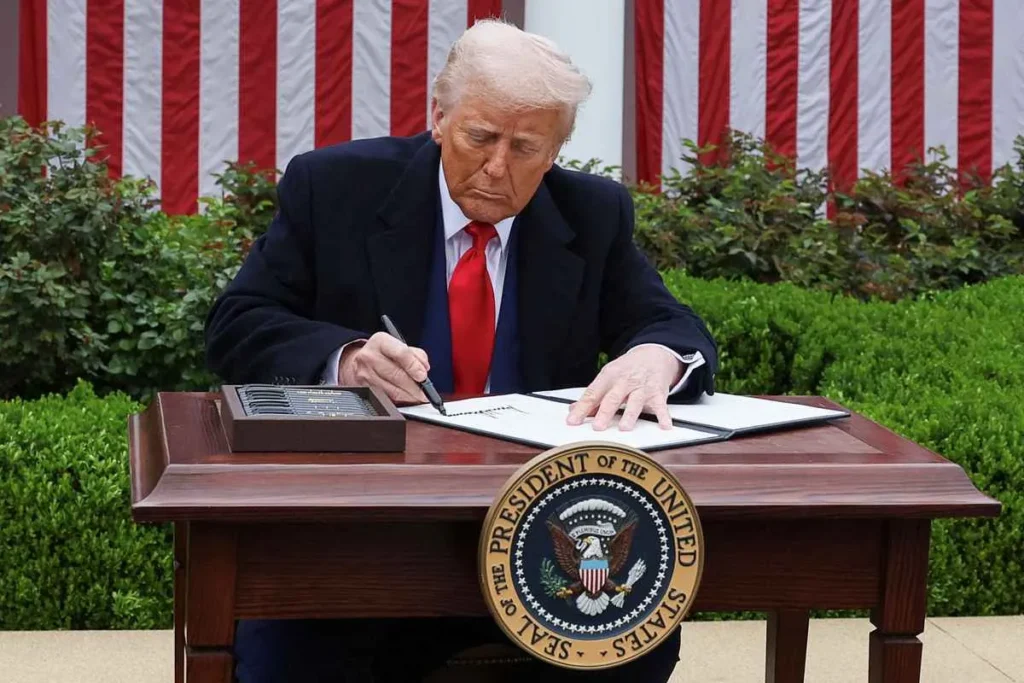President Trump’s recent announcement of sweeping tariffs on imports from 185 countries has caused a significant shakeup in the NFT industry. The digital art market, which had been experiencing rapid growth, saw a 12% drop in weekly sales volume in early April following the tariff announcement.
Key Takeaways:
– NFT weekly sales volume decreased from $97 million to $86 million after Trump’s tariff announcement on April 2, according to data from CryptoSlam.
– While physical art faces import tariffs, digital art and NFTs remain tariff-free, giving them a competitive edge.
– The broader crypto market experienced significant liquidations, with Bitcoin falling by 10.25% and Ethereum dropping by 19.84% on April 7.
– The reclassification of NFTs as “collectibles” has increased tax liability for long-term capital gains from 15-20% to 28%.
– Digital art platforms like OpenSea and SuperRare are benefiting from the new tariff environment as collectors shift to digital-first acquisition strategies.
The NFT market saw a sharp decline in early April as investors panicked and began selling off speculative assets in response to the tariff announcement. Traders were concerned about the potential economic impact of the tariffs, leading to a shift towards more risk-averse trading behavior.
Digital art and NFTs have emerged as a tariff-free alternative for collectors, as traditional art imports now face import tariffs of 20-25%. This has made digital art a more attractive option for collectors looking to avoid additional costs.
The decline in the NFT market mirrored broader cryptocurrency volatility following the tariff announcement, with massive sell-offs and liquidations. Platforms like Blur and Magic Eden saw decreased activity as investors moved to stablecoins amid inflation fears and trade war concerns.
The United States’ position in the global art market may be threatened by the new tariff structure, particularly impacting mid-tier artists and galleries. The reclassification of NFTs as collectibles has also increased tax liabilities for investors, potentially discouraging long-term investment in the space.
Digital art platforms are gaining a competitive edge in the new tariff environment, offering tariff-free transactions and attracting collectors with digital-first acquisition strategies. Market psychology and investor sentiment are driving trading patterns, creating both challenges and opportunities for strategic investors in the digital art space.
Global trade tensions and tariffs are reshaping the NFT market, with regional pricing disparities emerging and inflation concerns impacting investor confidence. These developments may lead to longer-term structural changes in how digital art is valued, traded, and collected across borders.

